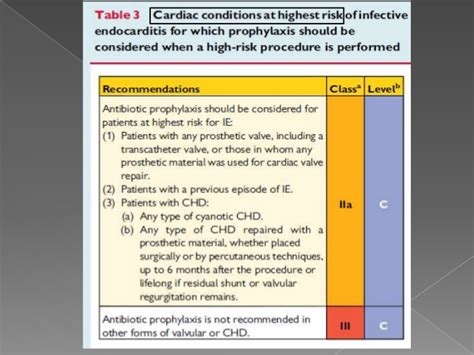Acute inflammation of the pharynx, pharyngitis, can be either an independent disease or be one of the symptoms of infectious diseases that affect the respiratory tract, such as ARVI, childhood infections. Acute inflammation of the pharynx, pharyngitis, can be either an independent disease or be one from the symptoms of infectious diseases occurring with damage to the respiratory tract, such as ARVI, childhood infections.
 The cause of the development of the disease is pathogenic microorganisms:
The cause of the development of the disease is pathogenic microorganisms:
- bacteria, more often staphylococci and streptococci;
- viruses;
- in rare cases - mushrooms.
A major role in the development of the disease is played by provoking factors:
- hypothermia;
- drinking too cold drinks;
- gas content and dustiness of the inhaled air;
- the presence of concomitant pathology and foci of chronic infection.
The disease is more widespread in the child age group, which is associated with the child's insufficient immunity. The most severe acute pharyngitis in a child occurs before the age of two years.
Signs
The main symptoms of the disease are:
- pain and foreign body sensation in the throat;
- scratching and tickling;
- cough.
The general condition of the patient is slightly disturbed. Children are active and lead a normal life.
The disease can occur at normal body temperature (subfebrile condition is less often noted).
However, children often have additional signs indicating the spread of the process to the nasopharynx and other parts of the throat.
Pain in the throat increases when swallowing, especially when the throat is "empty", that is, does not contain a lump of food. Sore throat worries the patient at rest. At the same time, she can give into the ear, neck.
The cough develops at the same time as the appearance of pain in the throat. It is dry at first. Over time, a small amount of difficult-to-separate whitish sputum appears. Then the symptoms regress.
Diagnostics
Acute pharyngitis in children can be diagnosed based on complaints, history, and physical examination data. If the child is small and cannot express his complaints, then one can suspect a lesion in the throat by the fact that he refuses to eat, is naughty while eating. In severe cases, as well as in the presence of ARVI, additional signs may be:
- malaise, weakness;
- lack of appetite;
- increased body temperature;
- nasal congestion;
- runny nose.
Usually, the development of these signs occurs after exposure to some provoking factor (more often hypothermia).
 Certain complaints indicating a lesion of the throat, and a connection with the impact of adverse factors are the reason to consult the child with a pediatrician or otolaryngologist, to conduct an objective examination of the pharynx, pharyngoscopy. This instrumental diagnostic method consists in the visual examination of the organ. Opening the patient's mouth and pressing the tongue root with a spatula, using an additional source of illumination, the ENT doctor examines the mucous membranes of the oral cavity and throat.
Certain complaints indicating a lesion of the throat, and a connection with the impact of adverse factors are the reason to consult the child with a pediatrician or otolaryngologist, to conduct an objective examination of the pharynx, pharyngoscopy. This instrumental diagnostic method consists in the visual examination of the organ. Opening the patient's mouth and pressing the tongue root with a spatula, using an additional source of illumination, the ENT doctor examines the mucous membranes of the oral cavity and throat.
The objective picture corresponding to acute pharyngitis is characterized by the following features:
- Redness of the mucous membranes of the posterior pharyngeal wall, palatine arches, hard and soft palate. In some cases, they turn bright red or crimson;
- Due to the swelling, the mucous membranes look shiny, have the appearance of "varnish";
- There is an increase in some lymphatic follicles, which are scattered in the form of red grains along the back wall of the pharynx;
- A similar process can affect other parts of the throat.
Symptoms and treatment of any disease directly depend on the cause that caused the development of this pathological condition. To clarify the nature of the throat lesion, in some cases it may be necessary to conduct a bacteriological examination of a smear or conduct a virological study, which consists in PCR diagnostics. Such additional studies can be used to clarify the diagnosis with specific pathogens, suspicion of diphtheria, as well as an unclear diagnosis.
Principles of non-drug treatment
Treatment of acute pharyngitis in children includes the mandatory conduct of non-drug measures. They imply the exclusion from the menu of spicy, sour, hot or overly cold dishes, carbonated drinks, natural juices. Food and drink should be of moderate temperature so as not to irritate the mucous membrane. It is also important that the foods used are thoroughly chopped. A coarse lump of food can injure the mucous membrane.
An important component aimed at improving the condition in a short time is an abundant warm drink.
The fulfillment of this condition helps to keep the mucous membrane of the throat moist. Viruses and bacteria do not feel well in a humid environment, drinking plenty of water contributes to the death of pathogens. In addition, in the case of ARVI, hydration of the body plays an irreplaceable role as detoxification measures, is an important means of lowering body temperature. Most preferably warm milk, alkaline mineral water, lemon tea.
In order to keep the mucous membranes of the throat moist, it is necessary to maintain an adequate temperature regime in the bedroom.
The optimum room temperature is approximately 20 degrees, with a humidity of at least 50%.
To achieve these conditions, use any available methods: ventilation, use of air humidifiers, etc.
Gargling
For older children, gargling is an effective procedure. For this, anti-inflammatory drugs offered by the pharmacy chain are used, such as
- Furacillin;
- Chlorophyllipt;
- Miramistin;
- Rotokan, etc.
Soda solution or "sea water" is also very popular, for the preparation of which three components are used, soda, salt and 2-3 drops of an alcohol solution of iodine per glass of boiled water. This procedure can also be carried out using a decoction of herbs, sage, chamomile, calendula.
The main condition is to carry it out after eating. One glass of the prepared solution is used for this, the temperature of which is within 40 degrees. Gargling in the throat should be carried out for 15-20 seconds. Thus, the duration of the procedure itself is about 5 minutes. Children after five years of age are recommended to carry out alkaline-oil inhalations, which can be carried out in the conditions of the physiotherapy room of the polyclinic, or carried out at home. The steam used must correspond to the patient's body temperature, that is, be within 40 degrees.
Medicines
As for medications, local drugs with anti-inflammatory and analgesic effects are used for treatment. They exist in a form of release convenient for a child, lollipops, aerosols, dragees, and have a varied pleasant taste. However, according to experts, these funds can only be used with a mild course of the disease, since they have low efficiency. The most common are Septefril, Faringosept, Strepsis, Givalex.
 Since strep throat is characterized by the presence of a cough, an important method of treating a child is the use of appropriate expectorant and mucolytic drugs.They are most effective for wet coughs, which are characterized by viscous, difficult-to-separate phlegm. The most popular among children are syrups prepared on the basis of marshmallow root, licorice, plantain.
Since strep throat is characterized by the presence of a cough, an important method of treating a child is the use of appropriate expectorant and mucolytic drugs.They are most effective for wet coughs, which are characterized by viscous, difficult-to-separate phlegm. The most popular among children are syrups prepared on the basis of marshmallow root, licorice, plantain.
As for the drugs with antitussive action, used for dry, hacking cough, due to the pronounced side effects, in children under 12 years of age, Codesan, Codterpin is not used. In this age group, it is possible to use such antitussive drugs as Paxeladin, Sinekod, Libeksin.
Effective antiviral agents have not yet been developed. In this regard, therapeutic measures for acute pharyngitis caused by a viral pathogen are symptomatic treatment. The main role in this case is assigned to the hydration of the body.
They turn to antibacterial agents in cases where there is a protracted course of pharyngitis, that is, the condition does not improve within three weeks, or an increase in temperature is noted for more than 5 days. A sign confirming the bacterial nature of the pathogen is an increase in regional lymph nodes, their pain on palpation. It is possible to reliably clarify the nature of the pathogen, possibly only by examining a smear from the pharynx.
Observations have confirmed that the use of antibiotics is justified only in every fifth case of acute pharyngitis in children.
In adults, their use is even more limited. The drugs of choice are penicillin antibiotics. Phenoxymethylpenicillin exists in the form of a release in the form of a solution, which allows it to be used in children from a very young age, calculating the required amount using a measuring spoon. Antibiotics from the group of cephalosporins, Cefixime, Ceftibuten, or macrolides, Erythromycin, Azithromycin are also used as antibacterial agents.
In recent years, a local antibacterial drug, Bioparox, has become widespread. Its main component is a broad-spectrum antibiotic Fusafungin. It is active against both gram-positive and gram-negative bacteria, as well as fungi. Another advantage of this aerosol agent is its anti-inflammatory effect. The calculation of a single dose is carried out according to the age of the child, and can be from two to four doses. The drug is administered 4 times a day.
The drug Imudon also has anti-inflammatory and anti-infectious effects. This remedy can be treated with a persistent course of acute pharyngitis, as well as with an exacerbation of a chronic one. The drug contains inactive microorganisms, which are most often the cause of the development of throat lesions. When using such a drug, the body's immune response is activated, which contributes to a speedy recovery. The use of the drug is also possible for prophylactic purposes.
Acute pharyngitis in a child is a mild illness - after a week, the symptoms regress. In the event that clinical signs persist for more than three weeks, we are talking about the transformation of the disease into a chronic form.



